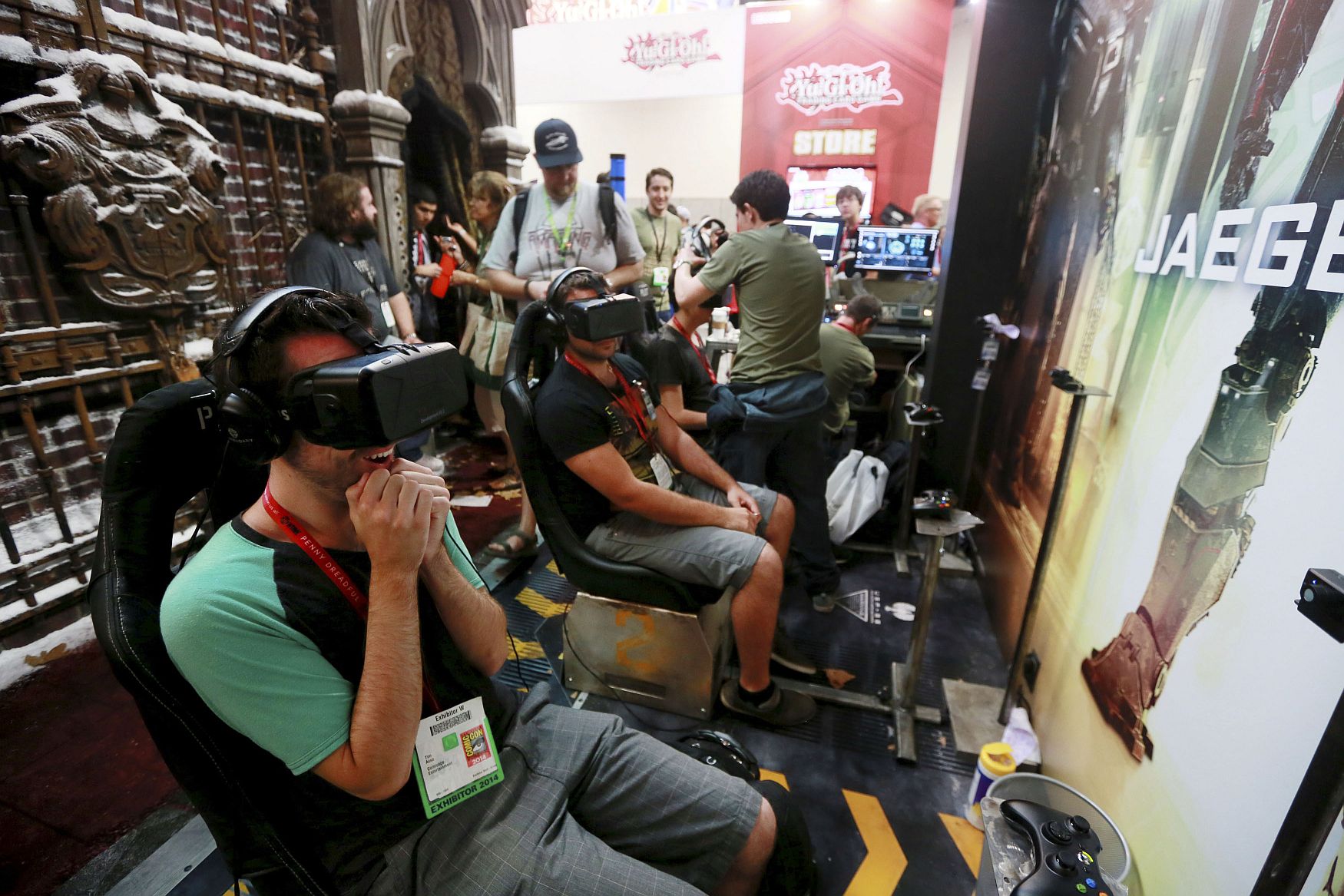Oculus Rift virtual reality technology is capable of much more than amazing video game experiences like the one Sega and Creative Assembly crafted with Alien: Isolation. Hollywood has embraced VR, which is only natural given feature films have been exploring virtual reality for decades. The only difference now is that science and technology have finally caught up to what was once science fiction.
The role of VR in the future of games and movies has yet to be determined, without even a release date or a price point for the Oculus VR or Sony’s Project Morpheus, the leading VR devices. There has been tremendous interest in VR among consumers, sparked by demos at various conventions. Perhaps even more compelling is the interest among developers, with more than 100,000 Oculus VR development kits sold so far.
Legendary Entertainment CEO Thomas Tull was an early investor in Oculus VR, long before Mark Zuckerberg spent $2 billion on the company. So it was no surprise that Legendary was one of the Hollywood studios to showcase just what can be done with Oculus Rift when coupled with the creative minds behind the Pacific Rim movie franchise, which include Guillermo del Toro, Industrial Light & Magic and Legendary. Hollywood computer animation studio ReelFX even used Epic Games video game technology Unreal Engine 4 to bring the experience to life. Barnaby Legg, vice president of theatrical strategy for Legendary, talks about the Hollywood potential for Oculus Rift in this exclusive interview.
[a]list daily: Creatively, what does VR open up for the minds behind big motion picture events like Legendary makes?
Barnaby Legg: What is most interesting about VR, and most different to traditional filmmaking, is the way in which the storyteller hands over control to the audience. When Guillermo del Toro makes a movie, he is the primary author of that experience — he is placing the camera, presenting audiences with the proscenium of the cinematic frame, and directing them where he wants them to go. With Pacific Rim: Jaeger Pilot, the viewer is an essential part of the storytelling. They are the cinematographer and the star, and these total immersion experiences thrive on limitless universes which are expansive enough to contain that kind of limitless storytelling. Legendary knows how to do that.
[a]list daily: How did you work with actor Charlie Hunnam on this project?
Barnaby Legg: Charlie’s performance was one of the last things to be added to the experience. It’s a very busy time for him as he finishes the final season of Sons of Anarchy, but we were thrilled he was able to find time in his schedule to become Raleigh Becket for all the fans who will experience this. Charlie is such a committed, physical performer. He was jumping around the voice over booth, acting out all the fight moves.
[a]list daily: What was the reaction from fans at Comic Con?
Barnaby Legg: The words “multiple fangasm” springs to mind. We had so many people tell us how mind-blowing this experience was for them. We ran the experience like it was a recruitment initiative for the PPDC, and everyone who got to take part was awarded their own Jaeger Pilot license. Which is what it’s all about… the fans are what drives the Pacific Rim universe. And now they can — literally.
[a]list daily: How easy would it be to add controller support or Kinect motion-sensor support to an experience like this (given that the user is asked to raise his hands in the demo)?
Barnaby Legg: Having overcome the creative challenges presented by this project, I would say anything is possible. Clearly, motion control is a natural next step. Seeing how people react to being immersed in the visual world of VR, interaction with that world is the next key evolution.
[a]list daily: What do you think it says about VR that there were multiple Oculus experiences on the show floor at Comic Con?
Barnaby Legg: Oculus VR goes from strength to strength, and I think they are really breaking out right now. Everyone is curious about VR, experimenting, trying new things, and I think we are going to see some really exciting stuff in the next twelve months. VR’s hardly a new thing, and we’ve been watching the Oculus tech as it has evolved over the past couple of years — but we never wanted to just jump on the bandwagon. We wanted to do it right, and set a new benchmark for what these kinds of experiences can achieve. Based on the feedback from fans at Comic-Con this year, I think we have achieved that.
[a]list daily: What impact do you feel the Facebook acquisition of Oculus and Sony’s Morpheus VR technology will have on the mainstream acceptance of VR in the home in the near future?
Barnaby Legg: That’s a question for Oculus. But that company has the talent, the innovation, and clearly now the resources to make incredible things happen. We are as excited to see where this might go as everyone else is.

